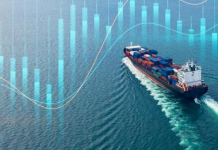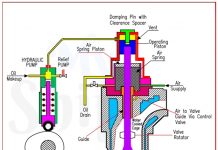
Q. STCW 95 has laid down minimum requirements for familiarization, basic safety training and instruction to all seafarers. Underline the importance of the role of the chief engineer of a ship in enforcing these elements of STCW training.
Q. The STCW 95 convention was amended in manila on 25th June 2010. What major changes and amendments were made for the engine department?
(a). Illustrate the salient factors for “on-board training” and “standard of competence” as laid out in the existing chapter III of STCW 95 and the amended chapter III of STCW (manila amendments).
(b). Underline the specific roles a CE needs to perform towards satisfactory training of engine room personnel under the existing and new regulation. What will be the criteria for evaluating competence for on-board training by a CE?
(c). What are the salient features of STCW Manila amendment 2010 with respect to electro technical officer, work and rest hours requirement of the Chief engineer officer toward ship board training of the personal.
Answer:-
STCW 95 chapter III deals with the standards required for the engine room personnel under different capacities
- Chapter III/1 deals with mandatory minimum requirements for certification of officers in charge of an engineering watch in a manned engine-room or designated duty engineers in a periodically unmanned engine-room.
- Chapter III/2 and III/3 deals with minimum standards required for chief engineer and second engineer officer for main propulsive power of 3000 KW or more and between 750 KW and 3000 KW respectively.
- Chapter III/4 deals with standards required for serving as engine room rating.
As per STCW 2010
- Regulation III/5 deals with minimum requirements for certification of ratings as able seafarer engine in a manned engine-room or designated to perform duties in a periodically unmanned engine-room.
- Regulation III/6 deals with minimum requirements for certification of electro-technical officers
- Regulation III/7 Mandatory minimum requirements for certification of electro-technical ratings
On Board Training
Every candidate shall follow an approved onboard training which:
a) Ensures that during the required period of seagoing service the candidate receives a systematic practical training & experience in the tasks, duties & responsibilities of an officer in charge of an engine room.
b) Is closely supervised and monitored by an qualified and certified engineer officer on board the ships in which the approved seagoing service is performed.
c) Is adequately documented in a training record book.
Standards of Competence
STCW 95 has very clearly specified the standards required under various capacities CH-III has divided the competency into four functions
Chapter III / 1
Every candidate requires demonstrating the ability to undertake various tasks, duties and responsibilities in the following field at the operational level.
- Marine engineering
- Electrical, electronics and control engineering
- Maintenance and repair
- Controlling the operation of ship and care for persons onboard
Chapter III/2 and chapter III/3
These gives the standards required by chief engineer and second engineer officer under different range of propulsive power, it basically gives the standard to be followed at management level with more importance given to
- planning of job
- making sure all safety procedures are followed
- trouble shooting
- developing emergency and damage control plans
- organizing and managing crew
Chapter III / 4 – Basic Standards Engine Rating
This gives the basic standards of competency expected of engine rating
- Their strength to understand orders.
- Basic knowledge of common terms used in engine room.
- Engine room alarm systems especially fire alarms.
- Knowledge of emergency duties.
- Emergency escape routes etc.
Chapter III / 6 – Electro-Technical Officer
Every candidate for certification as electro-technical officer shall be required to demonstrate the ability to undertake the tasks, duties and responsibilities in the following field at the operational level.
a. Electrical, electronic and control engineering
b. Maintenance and repair
c. Controlling the operation of the ship & care for the persons on board
Chapter III / 7 – Electro-Technical Rating
Every electro-technical rating serving on a seagoing ship powered by the main propulsion machinery of 750 kW propulsion power or more shall be needed to demonstrate the competence to carry out the functions at the support level.
Role of C/E towards satisfactory training of the engine room personnel
Chief engineer must organize a training programme on board ship, he should
1. Break down various jobs into duties, tasks & subtasks
2. Establish priority of the tasks.
3. Define performance standards for each task.
4. Identify preferred mode of learning.
5. Collect date on profile of trained personnel.
6. Give the trainee a opportunity to work independently at the same time supervise his work constantly.
7. Figure out constraints like language, lack of training etc.
If trainee is found to be lacking in the knowledge in some areas the chief engineer must discuss his weakness with him & must try to give him a opportunity to improve upon. If the trainee require formal training in some fields then chief engineer must request for the shore based training of the person concerned.
Evaluating competence for onboard training
The criteria for evaluating the competence for onboard training of the engine room personnel is given in column 4, of tables A-III/1, III/3, III/4. Some of the criteria are as follows:
1. Identification of important parameters & selection of material is suitable.
2. Use of equipment & machine tool is suitable & safe.
3. Selection of tools & spares is suitable.
4. Dismantling, inspecting, repairing, & re-assembling are in compliance with manuals & good working practices.
5. The conduct, handover & relieving of watch, confirm with the accepted principles & procedures.
6. Safety measures for working are suitable.
7. A complete record is maintained of the movement & activities relating to the ships engineering systems.
8. Communications are clearly & well understood in compliance with established rules & procedures to assure safety of operations & to avoid environment pollution.
9. The causes of the machinery malfunctions are properly identified & actions are designed to assure overall safety of the ship & plant.
10. Procedures for monitoring shipboard operations & ensuring compliance with MARPOL requirements are fully observed.
11. The type & scale of emergency is properly identified & emergency procedures are followed as per plan.
12. Actions in responding to abandon ship & survival situations are appropriate.
13. Legislative requirements, relating to SOLAS & MARPOL are correctly identified.
On the basis of these guidelines & evaluation criteria, the competency of the onboard training can be evaluated.



